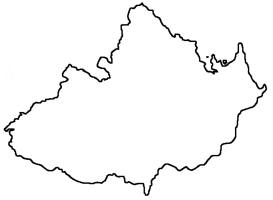
|
The Society of Folk Dance Historians (SFDH) Moravia
[
Home |
About |
Encyclopedia | CLICK IMAGE TO ENLARGE |

|
BACKGROUND
Information: A region.
Moravia is a historical region in the east of the Czech Republic and one of three historical Czech lands, with Bohemia and Czech Silesia.
Moravia borders Bohemia in the west, Lower Austria in the south(west), Slovakia in the southeast, Poland very shortly in the north, and Czech Silesia in the northeast.
Moravia occupies most of the eastern part of the Czech Republic. Moravian territory is naturally strongly determined, in fact, as the Morava river basin, with strong effect of mountains in the west (de facto main European continental divide) and partly in the east, where all the rivers rise.
Moravia occupies an exceptional position in Central Europe. All the highlands in the west and east of this part of Europe run west–east, and therefore form a kind of filter, making north–south or south north movement more difficult.
Following the break-up of the Austro-Hungarian Empire in 1918, Moravia became part of Czechoslovakia. As one of the five lands of Czechoslovakia, it had restricted autonomy. In 1928 Moravia ceased to exist as a territorial unity and was merged with Czech Silesia into the Moravian-Silesian Land (yet with the natural dominance of Moravia).
By the Munich Agreement (1938), the southwestern and northern peripheries of Moravia, which had a German-speaking majority, were annexed by Nazi Germany, and during the German occupation of Czechoslovakia (1939–1945), the remnant of Moravia was an administrative unit within the Protectorate of Bohemia and Moravia.
During WW II, Moravia lost more than 46,000 Jews according to religion.
DOCUMENTS
This page © 2018 by Ron Houston.
Please do not copy any part of this page without including this copyright notice.
Please do not copy small portions out of context.
Please do not copy large portions without permission from Ron Houston.